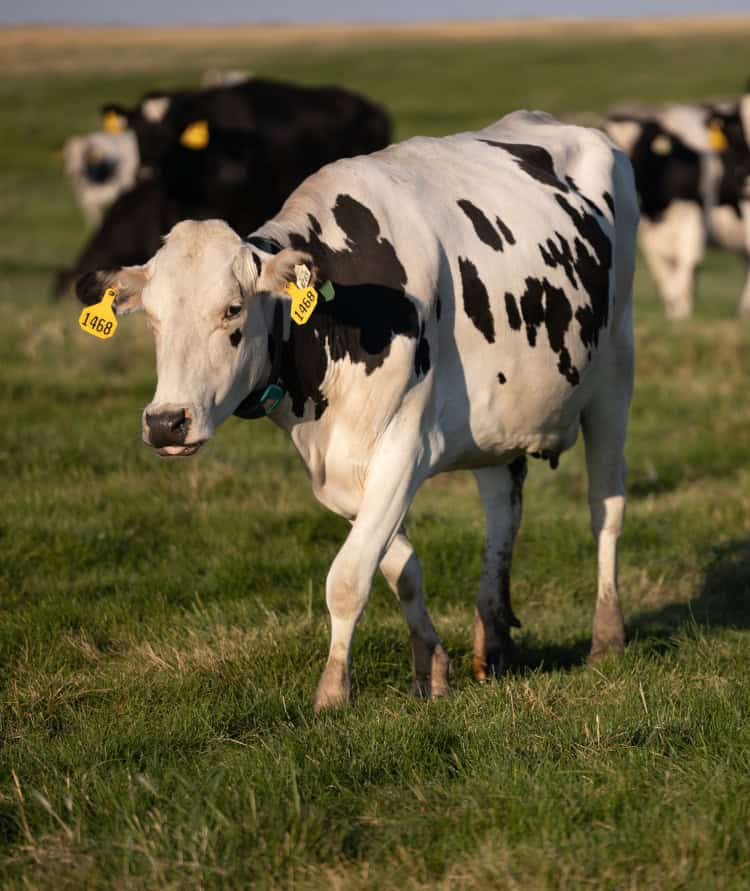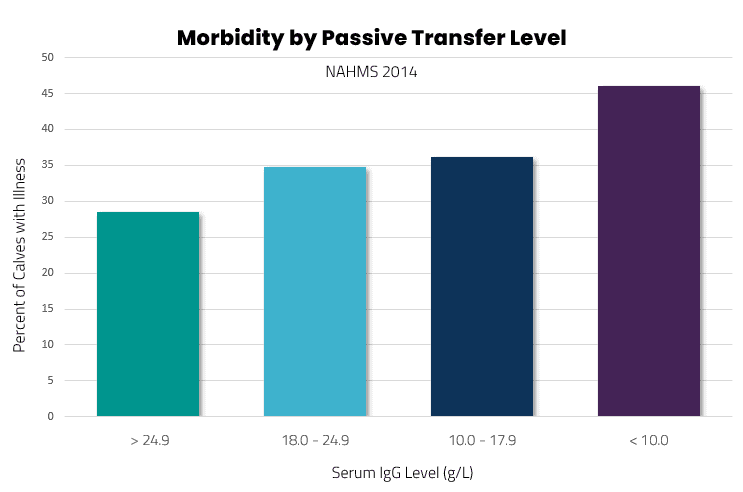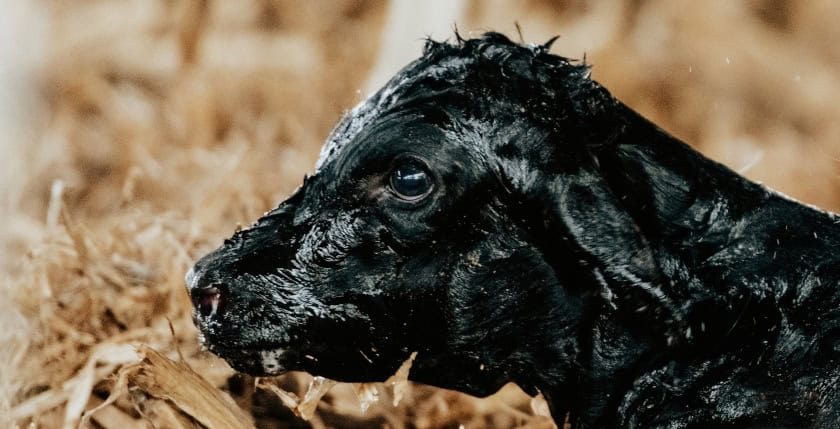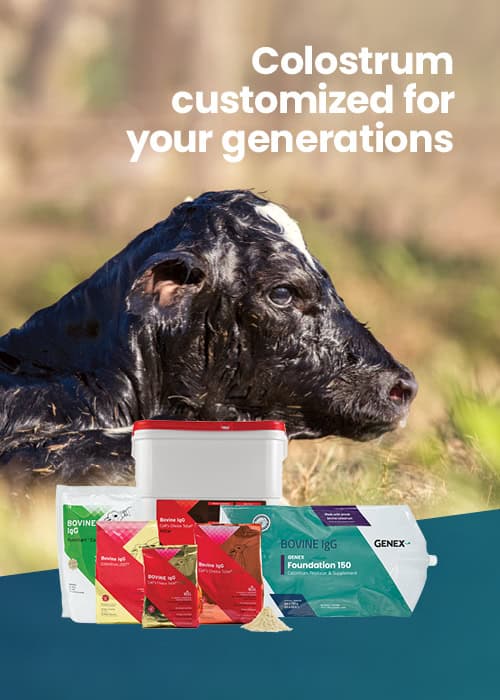“Do you have good luck when it comes to raising calves?” You have likely been asked this question. But, when it comes to calf scours prevention and ensuring calf health, it takes more than luck! That’s according to Kim Egan, DVM, who serves as the GENEX Director of Global Technical Solutions. In this article, Dr. Kim outlines steps you can take to proactively mitigate scours.
Preventing calf scours improves your farm’s overall profitability. Back in 2012, Goodell et al. estimated that a case of calf scours costs $56 in increased labor and medication. Besides inflation, this estimate does not account for calf mortality, negative impacts on daily gains and milk production, or the increased likelihood of extended time on feed to first freshening. Take all that into consideration, and the expense adds up!
In recent years, a lot of research has focused on calves and calf health. Let’s explore four proactive, research-backed steps that you can implement in your calf scours prevention strategy.
Calf Scours Prevention Step #1:
Choose genetics for health and longevity
There are steps you can take to prevent scours before the calf even hits the ground. Step one is to choose genetics that increase the likelihood of a calf to remain in your herd.
Prior to 2020, the only data available regarding an animal’s longevity or ability to remain in the herd was on adult cows; this data was and is known as the Productive Life (PL) trait. Now both Heifer Livability (HLIV) and Cow Livability (LIV) are available as genetic evaluations. Both are incorporated into the GENEX ICC™ index as well as the merit indexes published by the Council on Dairy Cattle Breeding.
When choosing a team of sires for your herd, use an index that includes weightings for these important genetic health traits. Selection using an index is a great way to ensure balanced genetic progress!
Calf Scours Prevention Step #2:
Proper dry cow management practices
The second step involves your management
practices during the cow’s pregnancy.
Studies have shown that heat stress during the dry period negatively affects the developing calf in a cow’s uterus. According to Dr. Jimena Laporta, calves born to dams that experienced heat stress during late gestation weighed less than calves born to dams that did not. In addition, calves born to heat-stressed dams weighed less throughout their first year of life and had compromised metabolism and immune function. When the weather warms up, remember that properly cooling your dry cows can generate healthier and more productive calves.
To maximize the passing of immunity from dam to calf through colostrum, dry period vaccination against calfhood pathogens and adequate maternal nutrition are also important. Work with your veterinarian and nutritionist to ensure your dry cow management program is positively impacting your calves.

Calf Scours Prevention Step #3:
Feed clean, quality colostrum on day one
On the first day of a calf’s life, you should feed colostrum to defend the calf against scour-causing pathogens. In 2014, the USDA National Animal Health Monitoring System (NAHMS) defined excellent passive transfer of immunity as having a serum IgG level at or over 25 grams per liter. The difference between the excellent level of passive transfer and the failing level (less than 10 g/L) translated to nearly 18% fewer sick calves, as shown in the table below.

It is important calves are fed whole bovine colostrum because it not only contains adequate antibodies but also fat. The fat found in whole bovine colostrum has been shown to facilitate brown fat metabolism to help the calf thermoregulate its body temperature (avoiding cold or heat stress helps reduce the chances for illness). Colostrum also provides prebiotic elements that nurture the beneficial gut microflora. In other words, it helps the “good” bacteria lining a normal gut to form a barrier against pathogenic or “bad” bacteria. Finally, the growth factors passed to the calf through colostrum promote intestinal tract development which increases the calf’s ability to absorb nutrients and remain healthy.
Unfortunately, disease-causing bacteria such as E. coli can contaminate your gloves, equipment or even colostrum. These bacteria can then pass through the channels meant for antibodies and go directly into a calf’s bloodstream or block those channels resulting in reduced antibody absorption. Therefore, it is good practice to routinely check the bacterial plate counts of colostrum. The goal should be less than 100,000 colony-forming units per milliliter. Using swabs and a luminescence meter is also a great way to gauge bacterial load on surfaces involved in colostrum handling. Check with your milk processor, veterinarian or calf advisor for availability of luminescence and plate count testing.
In addition to cleanliness, important factors for colostrum feeding include quickness, quality and quantity.
- Quickness. The ability for the calf to absorb antibodies diminishes every hour. Therefore, you should feed colostrum within the first hour or two to maximize the immunity transferred to the calf. If you use or store colostrum collected from the dam, the highest concentration is also attained from her within the first two hours after calving.
- Quality. High quality is defined as whole colostrum with at least 60 g/L of IgG or a Brix refractometer reading greater than 24%. Every collection of colostrum should be tested for quality. If it does not meet expected quality levels, it should be enriched with dried colostrum powder.
- Quantity. The goal for colostrum feeding on the first day of life is 300 total grams of IgG between the first two feedings. As mentioned, the first feeding should occur as soon as possible after birth (preferably within the first two hours). The second feeding should occur within 12 hours of birth. This feeding helps maximize IgGs and boost immunity until the calf can sufficiently produce its own antibodies. It also provides more growth factors to help your calves reach their full potential.
Calves that had a difficult birth, are a twin, or were exposed to heat or cold stress can have impaired absorption according to Dr. Jimena Laporta at the University of Wisconsin. For example, a difficult birth can reduce the efficiency of absorption by up to 20%. In this case, these stressed calves should receive additional boosts in IgG during their first two feedings. The effect of stress on absorption of IgGs is illustrated in the table below.

Calf Scours Prevention Step #4:
Feed transition milk
The fourth step to preventing scours is transition feeding. Feeding transition milk (or a mixture of whole colostrum and milk) to calves beyond day one of life can have positive impacts. In fact, it can increase average daily gain, lower the risk of diarrhea and reduce mortality. These benefits have been seen by feeding either high concentrations for a short period of time (50:50 colostrum to milk ratio for 2-3 days) or lower concentrations for an extended period (10:90 colostrum to milk ratio for 14 days).
Why the benefits? This transition feeding step provides IgGs to bind pathogens in the gut lumen and allows for more persistent serum IgG levels to be maintained. Additionally, the growth factors in the colostrum promote gut health and development.
Note that when using dried whole colostrum powder for transition feeding, the feeding recommendations are based on grams of powder (rather than grams of IgGs). If powdered milk replacer is being used, substitute the equivalent number of grams.
In summary, four steps you and your team can take towards calf scours prevention are outlined below. As General MacArthur once said, “The best luck of all is the luck you make for yourself.” Don’t leave your calf health to chance, take a proactive approach to mitigating scours by:
- Choosing genetics for health and longevity
- Vaccinating and providing dry cows with a low stress environment
- Defending calves on day one with clean, high-quality, whole colostrum
- Transitioning calves to milk feeding
Have further questions about these topics? Reach out to our calf care experts! Contact Dr. Kim Egan (Director of Global Technical Solutions) or Karen Wirtjes (Herd Care Line Advisor) or contact your local GENEX representative.
References available upon request.



